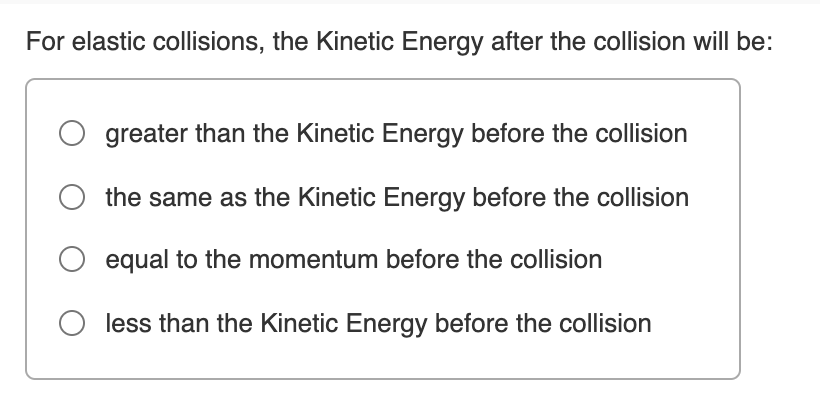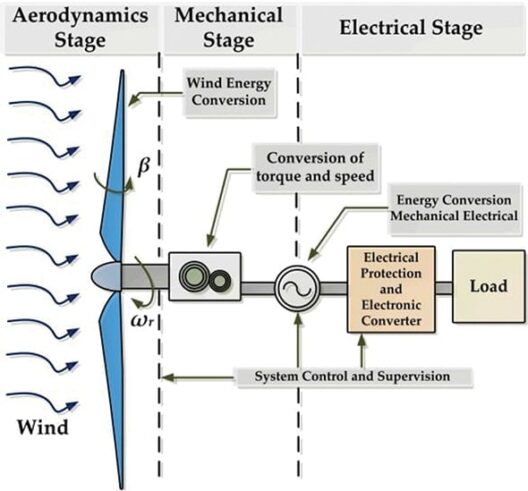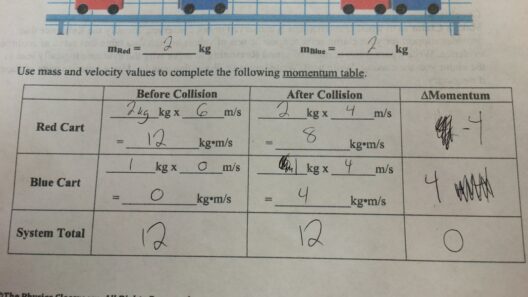The concept of kinetic energy conservation in elastic collisions is a fundamental principle in physics that elucidates how energy behaves during interactions between colliding bodies. Understanding this phenomenon requires a grasp of several key concepts including the definitions of elastic collisions, basic principles of kinetic energy, and the broader implications of these interactions on both theoretical and practical levels.
In essence, an elastic collision is characterized by the fact that both momentum and kinetic energy are conserved. This distinguishes elastic collisions from inelastic collisions where kinetic energy is transformed into other forms of energy, such as heat or sound. The distinction is crucial for various applications, from engineering to sports physics, where predictions about the outcomes of collisions need to be precise. By delving into the mechanics behind this conservation, one can appreciate the elegance of physical laws governing motion.
It is important to first define kinetic energy itself. Kinetic energy (KE) is the energy an object has due to its motion, quantified by the equation KE = 1/2 mv², where m represents mass and v denotes velocity. In an elastic collision, when two objects collide and bounce apart, the total kinetic energy remains the same before and after the event. This conservation implies that the energy within the system is not lost but merely redistributed among the colliding entities.
The crux of the energy conservation in elastic collisions lies in the precision of the interactions involved. When two objects collide elastically, their shapes do not permanently deform, nor do they generate sound or heat that absorbs energy. This perfect exchange is a representation of energy exchanging without loss, fundamentally characteristic of elastic interactions.
Understanding Momentum Conservation
To delve deeper into why kinetic energy is conserved in elastic collisions, one must first grasp the principle of momentum conservation. Momentum, defined as the product of an object’s mass and velocity (p = mv), is always conserved during collisions, regardless of whether they are elastic or inelastic. In elastic collisions, this conservation serves as a foundational principle that supports the conservation of kinetic energy.
During a collision, the total momentum before the interaction equals the total momentum after. By applying the conservation of momentum, one can derive a relationship between the velocities of colliding objects before and after the collision. This relationship provides a mathematical framework from which one can deduce the outcomes of various collision scenarios.
Through momentum conservation equations, we can witness how the velocities of the objects are influenced post-collision. The elegance arises when one realizes that these equations intertwine with those of kinetic energy conservation, corroborating the assumption that no energy is lost in translation during the elastic interaction.
Examining the Energy Exchange
When dissecting elastic collisions, one of the fascinating aspects is the intricate energy exchange that takes place. The energy transfer manifests as both objects effectively sharing kinetic energy to uphold the conservation laws. For instance, if two balls collide elastically, one may lose kinetic energy while the other gains an equal amount, resulting in no net change in total kinetic energy.
This phenomenon can be demonstrated in various practical scenarios, such as billiard games where players can exploit the principles of elastic collisions to execute precise shots. The predictability of the outcome, given the initial conditions of angles and velocities, exemplifies the reliable nature of kinetic energy conservation in elastic collisions.
Additionally, the implications of this understanding extend beyond recreational applications into engineering and physics. Here, understanding how energy behaves during collisions allows engineers to design safer vehicles, improve sports equipment, and even predict the outcomes of astronomical events involving celestial bodies. The pervasiveness of this knowledge reinforces its significance across disciplines, embodying a quintessential aspect of mechanics.
Applications of Kinetic Energy Conservation
As kinetic energy conservation plays a pivotal role in various fields, its applications are both plentiful and varied. In aerospace engineering, for example, understanding the energy dynamics during impact is crucial for designing crash-resistant structures. In sports, athletes leverage these principles to boost performance in activities like pole vaulting or diving, where understanding how to maximize the rebound effect influences success rates.
Moreover, in the realm of physics education, teaching the conservation of energy through real-world examples enhances comprehension and engagement in the subject. Students can visualize and experience these principles in action, laying a robust foundation for future explorations in both classical and modern physics.
Conclusion: The Harmonious Dance of Energy and Momentum
In conclusion, the conservation of kinetic energy in elastic collisions epitomizes a profound interplay between momentum and energy that prevails throughout the physical universe. Recognizing the mechanics of energy conservation not only enriches one’s understanding of physics but also highlights the ramifications within multifarious fields, from engineering to environmental science. As we continue to advance in our quest for knowledge, the principles governing kinetic energy and its conservation will undoubtedly remain pivotal in our exploration of the natural world.








